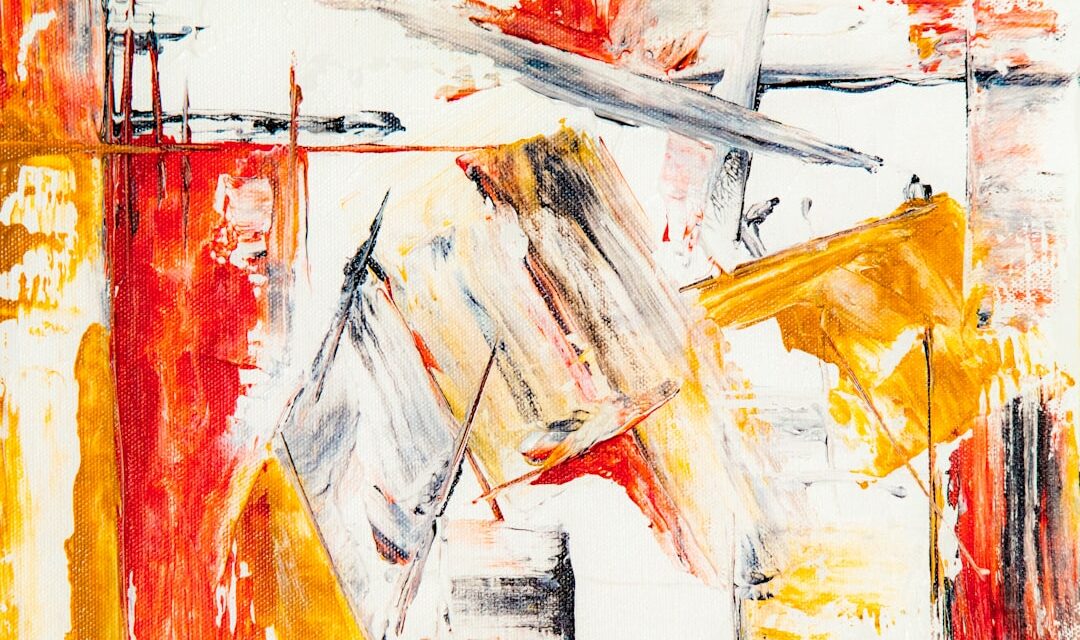Imagination serves as the cornerstone of the creative process, acting as a bridge between the mundane and the extraordinary. It is within the realm of imagination that artists can transcend the limitations of reality, allowing them to explore uncharted territories of thought and expression. This mental faculty enables individuals to envision possibilities that do not yet exist, crafting narratives and visuals that resonate with both personal and universal themes.
The act of creation is not merely a technical exercise; it is an exploration of ideas, emotions, and experiences that are often ineffable. Through imagination, artists can channel their innermost thoughts into tangible forms, whether it be through painting, sculpture, or any other medium. The creative process is inherently dynamic, often characterised by a series of ebbs and flows.
Artists may find themselves in a state of inspiration, where ideas flow freely, only to be met with periods of doubt or stagnation. This cyclical nature of creativity underscores the importance of nurturing one’s imagination. Engaging with diverse stimuli—be it nature, literature, or even conversations—can ignite the spark of creativity.
Furthermore, the act of experimentation plays a crucial role in this process; by allowing oneself to play with ideas and materials without the fear of failure, artists can unlock new pathways of thought. Ultimately, imagination is not just a tool for creation; it is a vital force that propels artists forward on their creative journeys.
The Role of Art in Expressing Imagination
Art serves as a powerful medium for expressing the boundless nature of imagination. Through various forms—be it painting, sculpture, music, or performance—artists can articulate complex ideas and emotions that might otherwise remain unspoken. The visual language of art allows for a unique interpretation of the world, enabling both the creator and the audience to engage with concepts that challenge conventional perceptions.
In this way, art becomes a conduit for imagination, transforming abstract thoughts into concrete experiences that can be shared and understood. Moreover, art has the ability to evoke a sense of wonder and curiosity, inviting viewers to explore their own imaginations. When confronted with a piece of art, individuals are often prompted to reflect on their own experiences and emotions, leading to a deeper connection with the work.
This interaction between artist and audience highlights the collaborative nature of imagination; while the artist may initiate the dialogue through their creation, it is ultimately the viewer’s interpretation that breathes life into the artwork. Thus, art not only expresses imagination but also fosters a communal space where ideas can flourish and evolve.
Techniques for Cultivating Imagination in Art

Cultivating imagination in art requires intentional practice and an openness to exploration. One effective technique is to engage in regular brainstorming sessions, where artists can jot down ideas without self-censorship. This free-flowing approach encourages spontaneity and can lead to unexpected connections between seemingly unrelated concepts.
Additionally, maintaining a sketchbook can serve as a valuable tool for capturing fleeting thoughts and visual ideas. By revisiting these sketches over time, artists may discover new avenues for exploration that they had previously overlooked. Another technique involves immersing oneself in diverse experiences and environments.
Travel, for instance, can expose artists to different cultures, landscapes, and artistic traditions that can inspire new ways of thinking. Similarly, attending exhibitions or engaging with fellow creatives can stimulate fresh ideas and perspectives. Furthermore, incorporating mindfulness practices into one’s routine can enhance imaginative capabilities; by quieting the mind and fostering a state of presence, artists may find themselves more attuned to their inner thoughts and feelings.
Ultimately, cultivating imagination is an ongoing journey that requires both dedication and curiosity.
The Influence of Imagination on Artistic Styles
Imagination plays a pivotal role in shaping artistic styles, as it allows artists to develop unique visual languages that reflect their individual perspectives. Throughout history, various movements have emerged as a direct result of imaginative exploration. For instance, the Surrealist movement sought to unlock the unconscious mind through dreamlike imagery and unexpected juxtapositions.
Artists like Salvador Dalí and René Magritte harnessed their imaginations to create works that challenged rational thought and invited viewers into fantastical realms. Similarly, contemporary art continues to evolve as artists draw upon their imaginative faculties to push boundaries and redefine traditional styles. The rise of digital art has opened new avenues for creative expression, enabling artists to manipulate images and sounds in ways that were previously unimaginable.
This fusion of technology and imagination has given birth to innovative styles that reflect the complexities of modern life. As artists continue to explore the interplay between imagination and technique, they contribute to an ever-expanding tapestry of artistic expression that resonates with audiences across generations.
The Connection Between Imagination and Emotion in Art
The relationship between imagination and emotion is integral to the creation of impactful art. Imagination allows artists to delve into their emotional landscapes, translating feelings into visual or auditory forms that resonate with others. This emotional authenticity is what often makes art so powerful; it speaks to shared human experiences and evokes empathy in viewers.
For instance, an artist grappling with loss may channel their grief into a poignant painting that captures the essence of their sorrow, inviting others to reflect on their own experiences with loss. Moreover, the imaginative process often serves as a therapeutic outlet for artists. By externalising their emotions through creative expression, they can gain clarity and understanding of their inner worlds.
This cathartic aspect of art-making not only benefits the artist but also creates a space for viewers to engage with their own emotions. When confronted with a piece that resonates on an emotional level, individuals may find solace or validation in their feelings. Thus, imagination acts as a conduit for emotional expression, forging connections between artists and audiences alike.
Using Imagination to Create Meaningful Art

The Power of Personal Experience
Artists often draw upon their own experiences, beliefs, and observations to craft works that reflect their unique perspectives on life. This introspective approach allows for authenticity in artistic expression; when an artist invests their imagination into a piece, it becomes imbued with personal significance that can resonate with others on multiple levels.
Addressing Broader Societal Issues
Furthermore, meaningful art often addresses broader societal issues or universal themes that provoke thought and dialogue. By harnessing their imaginative faculties, artists can shine a light on topics such as identity, inequality, or environmental concerns. For example, contemporary artists like Ai Weiwei utilise their work as a form of activism, using imagination to challenge political structures and advocate for change.
Transcending Aesthetics
In this way, art transcends mere aesthetics; it becomes a vehicle for social commentary and reflection on the human condition.
The Intersection of Imagination and Reality in Art
The intersection of imagination and reality is a fascinating aspect of artistic creation. While art often draws inspiration from real-life experiences and observations, it simultaneously allows for the reimagining of those realities through an imaginative lens. This interplay enables artists to create works that reflect both the tangible world and the abstract realms of thought and feeling.
For instance, Impressionist painters like Claude Monet captured fleeting moments in nature while infusing their works with personal interpretations that transcended mere representation. Moreover, this intersection invites viewers to question their perceptions of reality. When confronted with an artwork that distorts or reinterprets familiar scenes or subjects, audiences are encouraged to reconsider their own understandings of the world around them.
This dialogue between imagination and reality fosters critical thinking and invites deeper engagement with art. Ultimately, it is this dynamic relationship that enriches the artistic experience, allowing both creators and viewers to explore new dimensions of meaning.
The Importance of Imagination in Pushing the Boundaries of Artistic Innovation
Imagination is essential in pushing the boundaries of artistic innovation; it fuels experimentation and encourages artists to challenge established norms. Throughout history, many groundbreaking movements have emerged from imaginative explorations that defied convention. The Abstract Expressionists, for example, broke away from traditional representational forms to explore colour and emotion as primary subjects in their work.
This radical shift was driven by an imaginative desire to express the inexpressible—a pursuit that continues to inspire contemporary artists today. In our rapidly changing world, where technology constantly reshapes our experiences, imagination remains a vital force for innovation in art. Artists are now able to utilise digital tools and platforms to create immersive experiences that blur the lines between physical and virtual realities.
This evolution not only expands the possibilities for artistic expression but also invites new audiences into the fold. As artists continue to push boundaries through imaginative exploration, they contribute to an ever-evolving landscape of creativity that reflects the complexities of contemporary life. In conclusion, imagination is an indispensable element in the realm of art—serving as both a catalyst for creativity and a means of expressing profound human experiences.
By exploring its multifaceted nature through various techniques and styles, artists can create meaningful works that resonate deeply with audiences while pushing the boundaries of innovation. As we continue to navigate an increasingly complex world, nurturing our imaginations will remain essential in fostering artistic expression that speaks to our shared humanity.
If you enjoyed reading about The Imaginative Canvas, you may also be interested in learning more about the painting “The Adoration of the Golden Calf” by Nicolas Poussin. This masterpiece from 1635 is a fascinating exploration of religious themes and artistic techniques. To delve deeper into this captivating artwork, check out this article for a comprehensive overview.



